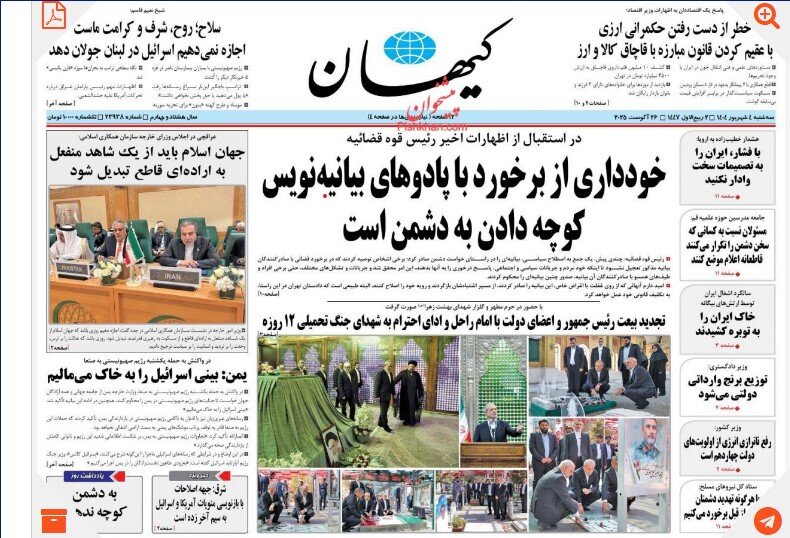Iran gained access to advanced technology in 12-day defense

Kayhan reviewed the downing of Israeli drones in the 12-day war in June and wrote: The downing of advanced Israeli drones is a major achievement for the Iranian armed forces.
The remains of the downed drones contain sensitive technologies such as electro-optical sensors, advanced radars, electronic warfare systems, and satellite communications. With a strong history of reverse engineering, Iran can analyze these technologies and use them in the design of its new drones. This could lead to improved accuracy, range, stealth, and combat capabilities of Iranian drones. This success has strengthened Iran’s position as a drone power in the region and the world. The ability to shoot down Israeli drones, which are among the most advanced in the world, could increase international customers’ trust in the Iranian technology and expand the export market for Iranian drones. This operational experience provides valuable information for upgrading Iran’s defense systems, which indirectly helps protect drone infrastructure and strengthen Iran’s superiority.
Donya-e-Eqtesad: ICT will suffer if sanctions are returned
Donya-e-Eqtesad discussed the impact of the snapback mechanism on digital economy industry in an interview with Ehsan Chitsaz, the deputy communications minister for international affairs. He said: It should be noted that Iran’s ICT industry is at a sensitive point today, because on the one hand, the risk of the activation of the snapback mechanism could isolate this sector more strongly, reduce access to global services, and accelerate migration of human capital. On the other hand, even in the absence of this mechanism, internal challenges such as widespread filtering, internet instability, and unpredictable policies have limited the space for startups and technology companies to operate. Therefore, lifting sanctions and opening up the path to interaction with the global chain could enable Iran’s access to new technologies, foreign investment, and international partnerships. The future of Iran’s technological industry depends more than anything else on whether the country can overcome both the threat of sanctions and domestic obstacles, such as filtering in the near future.
Arman-e-Emrooz: Dynamic diplomacy
In a note, Arman-e-Emrooz discussed the dynamic diplomacy of the sitting government. The paper said: The 14th government’s dynamic diplomacy allowed it to create new routes for trade and exports by expanding commercial and economic relations with neighbors. By pursuing a balanced foreign policy, the 14th government was able to manage relations with global and regional powers. While some Persian Gulf nations demonstrated inclination toward preserving the U.S. military presence in the region, Iran helped create balance in the region by strengthening ties with China and Russia. This multilateral approach allowed Iran to resist foreign pressure and, at the same time, establish friendly relations with its neighbors. By focusing on regional integration and dynamic diplomacy, the government established Tehran’s position as a key power in the Middle East. The restoration of relations with Egypt and Bahrain after years, along with the expansion of cooperation with other countries in the region, indicated the success of the government in promoting peace and stability.
Sobh-e-No: Deterrence through unity
In an article, Sobh-e-No emphasized that the statements of the Leader of the Islamic Revolution once again underscored a strategic truth: unity remains the sole guarantor of Iran’s survival and progress. The solidarity and cohesion forged during the 12-day conflict reshaped the American-Zionist adversary’s perception of Islamic Iran. The vigilance of the Iranian people successfully disrupted the enemy’s plans to confront and destabilize the nation. Foreign powers continue to deploy hybrid warfare—ranging from crippling sanctions to media manipulation and cognitive tactics—in an effort to erode national authority. In this context, any internal discord risks becoming a “strategic black hole” for the country. Today, Iran stands at a historic crossroads: one path champions national strength and comprehensive deterrence, while the other is adorned with appealing rhetoric but lacks substance. The choice is clear—dignity and security lie in intelligent unity and active resistance. Any alternative narrative merely echoes the psychological warfare of hostile forces.
Leave a Comment